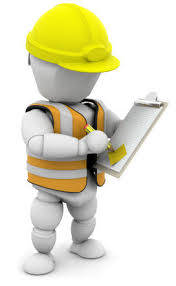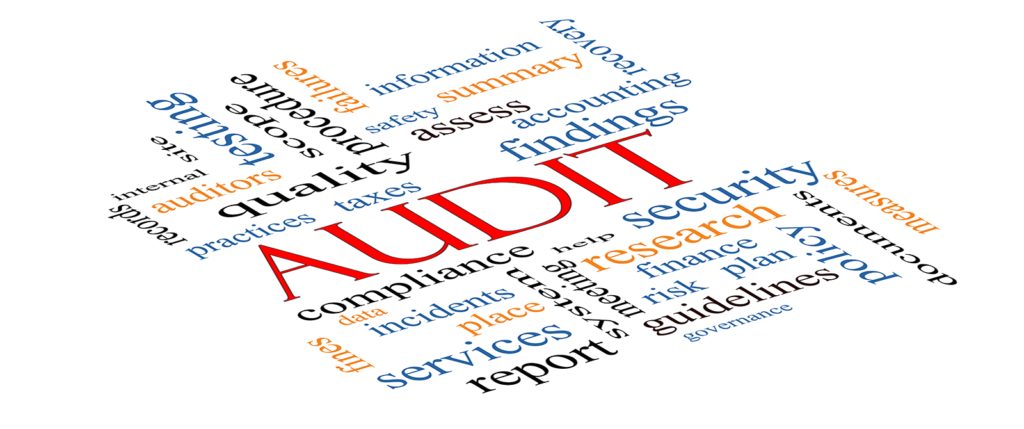
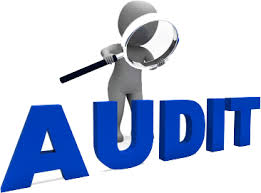
Audit is a systematic and, wherever possible, independent examination to determine whether activities and related results conform to planned arrangements and whether these arrangements are implemented effectively and are suitable to achieve the organization’s policy and objectives.
The health and safety management audit our members adopted is a structured process of collecting independent information on the efficiency, effectiveness and reliability of the total H&S management system and drawing up plans for corrective action.
Auditing examines each stages in the H&S management system by measuring compliance with the controls the organization has developed, with the ultimate aim of assessing their effectiveness and their validity for the future.
Contents
Objective:
The objective of the safety audit is to evaluate the effectiveness of the company’s safety effort and make recommendations which lead to a reduction in accidents and minimization of loss potential.
Safety audits are an important part of a company’s control system and these checks ensure that deteriorating standards are detected. Examination of the defects exposed in this review results in hazardous conditions and potential accidents being avoided.
Regular audits should be based on the premise that resources should be made available to identify and eliminate hazards before accidents occur, rather than use the resource of manpower and materials only after injuries and damage to equipment have resulted in human suffering, significant monetary loss which, in certain circumstances, affect the profitability severely.
The safety audits will monitor all activities performed on site, and in particular:
- The basic safety policy and organization of the company.
- Management commitment and example on safety matters.
- Administration and safety activity.
- Accident reporting and investigation.
- Opportunity of injury – and record of every injury.
- Safety committees.
- Working rules and practices for each company location, including visitors and contractors.
- Compliance with statutory regulations and company standards.
- Behavior and unsafe acts of personnel and their relationship to compliance with safety rules.
- Activity related certification of employees.
- First Aid certified employees.
- Training needs and activities.
- Hazards review of process equipment for either new or existing facilities.
- Operating procedures.
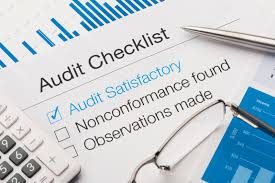
- Safety work permits.
- Emergency procedures.
Application of safety audit:
Safety audits are conducted in order to assess the degree of compliance with the applicable safety regulatory requirements and with the procedural provisions of a Safety Management System(SMS) if one is in place. They are intended to provide assurance of the safety management functions, including staffing, compliance with applicable regulations, levels of competency and training.
Safety audits are used to ensure that:
- Organizations SMS has a sound structure and adequate staffing levels;
- Approved procedures and instructions are complied with;
- The required level of personnel competency and training to operate equipment and facilities,and to maintain their levels of performance, is achieved;
- Equipment performance is adequate for the safety levels of the service provided;
- Effective arrangements exist for promoting safety, monitoring safety performance and processing safety issues;
- Adequate arrangements exist to handle foreseeable emergencies.
Safety audits are carried out by a single individual or a team of people who are competent (adequately qualified, experienced and trained) and have a satisfactory degree of independence from the audited organization or unit. The frequency of the audits depends on the regulatory/management policy. For example some State authorities may conduct annual safety audits; others may consider that a full safety audit is only necessary at a few years interval.
Description of Safety Audit Practice:
Safety audit practice subjects each area of a company’s activity to a systematic critical examination with the object of minimizing human suffering and monetary loss. Every component of the total systems included, e.g. management policy, attitudes training, features of the process, layout and construction of the plant, operating procedures, emergency plans, personal protection standards, accident records,etc.
An audit, as in the fields of accountancy, aims to disclose the strengths, the weaknesses and the main areas of vulnerability or risk, and is carried out by appropriately qualified personnel.It is important to ensure that the attitude of all personnel to safety audit practice is positive. It may need to be pointed out that the reason for the audit is to help the plant management to establish those areas within the plant where additional effort is required to ensure safety at all times. The audit is not there to find fault with the efforts of local manage. The safety audit is an aid to sound, safe, plant management.
Audits will involve plant operatives and review training, work experience, knowledge of procedures, emergency procedures and other plant operating instructions.
A formal report and action plan is subsequently prepared and monitored.
Types of safety audit:
There are three types of audit , which classified under three category as follows.
1. Compliance audit.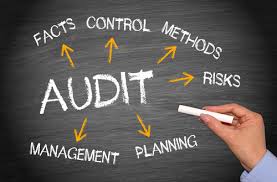
2. program audit.
3. Management system audit.
1. Compliance audit
The most basic audit is a compliance or condition inspection. OSHA does not specifically require that companies conduct safety and health audits, but OSHA regulations are written such that employers must furnish their employees with a place of employment that is free from recognized hazards and complies with certain OSHA standards. Management then develops programs for each employee to comply with certain standards, rules and regulations. In addition, compliance requirements dictate certain record-keeping, programs and training requirements. A true compliance audit will look at all three factors — conformance, record-keeping and training.
A safety audit based on OSHA compliance will determine whether the company can provide a safe and healthful workplace. But this audit on its own tends to focus more on unsafe conditions rather than unsafe acts and behaviors. However, the majority of accidents occur from unsafe acts, i.e., you can have a wet floor (unsafe condition), but an injury may not occur until someone walks on the wet floor and slips (unsafe act). It is impossible to have a workplace free from unsafe conditions all of the time, because conditions and people change and the potential that someone will create unsafe conditions is always present.
2. Program audit:
To achieve a goal of reducing accidents and incidents as well as unsafe acts and conditions which result in accidents, you must have programs in place that dictate how to implement safety rules or requirements. An example of a regulatory requirement is to record accidents on an OSHA 300 log and to do so within six days. A program requirement would describe the method one would use to investigate the accident. OSHA, while providing suggestions for investigating an accident, does not regulate how to investigate. So it is up to the company to define and write down the procedure for investigating the accident in order to implement the safety rule or requirement and to make it meaningful. Having done so, the company now has a safety program in place for the procedure.
A program audit is an analysis that gauges the implementation and strategy of these safety programs. Is the company following its own procedures and programs?
One drawback to a program audit is determining what to use as a standard. There is plenty of guidance but not much consistency in professional practice when it comes to what should be included in safety programs. There are some fundamentals, however. For one, it is essential to any safety program that all procedures are written down. Writing down the program allows the communication of the hazard as well as the procedures for minimizing exposure to the hazard and allows the procedure to be checked, measured and or audited. If unsafe acts create unsafe conditions, you need a program to communicate how to stop doing those things.
One challenge is that keeping safety programs current requires being able to manage change. New facilities, equipment and personnel (i.e., change in shift hours if it means an increase in workers’ exposure time) require changes in safety programs.
Both the compliance and program audit are useful snapshots to indicate potential exposures and risks. The value of these audits is to find the safety gaps so they can be closed. Another value is to verify if people are really following established safety guidelines. But an audit that is conducted only once a year is limited if there is no ongoing process by which to measure peoples’ performance how often and how well are employees using and following safety programs.
Management systems audit
The final step in a comprehensive safety audit is to evaluate and validate the effectiveness of, and management’s commitment to, safety compliance and programs, employee involvement, and risk control procedures. The management systems audit examines accountability, effectiveness of this implementation and how well the company’s health and safety program is integrated into the overall culture. A management systems audit integrates all three audit techniques, document review, interviews and workplace observation, to make these determinations. Finally, to make safety programs sustainable, they must be integrated into the company’s existing business practices.
Who conducts the Safety Audit?
The Safety Audit is an interdisciplinary self-assessment tool, so the work is conducted by a community team of domestic violence experts and key workers who represent the systems that are being examined. Team members collect data and meet as a group to discuss the Audit findings; recommend changes in policy, procedure, and training; strategics how to implement the recommended changes; and help implement, monitor, and evaluate the changes over time.
What happens during a Safety Audit?
The process involves examining whether institutional policies and practice enhance the safety of battered women and their children, as well as enforce perpetrator accountability. The Safety Audit does not assess individual effectiveness or actions. An Audit involves mapping the system, interviewing and observing workers, analyzing paperwork and other texts generated in the handling of domestic violence cases. Recommendations coming out of an Audit process are directed toward institutional changes that will enhance victim safety and perpetrator accountability.
Who serves on the Safety Audit Team:
The Audit team typically consists of practitioners from agencies involved in the case processing under review. All Audit teams have a significant presence of community-based advocates who have expertise in the dynamics of domestic abuse and a close relationship with victims of battering. The goal is to have an analysis that incorporates the knowledge of a cross section of people who work with these cases everyday. Audit team members must be committed to inter agency cooperative work, confidentiality as agreed upon by the team, and an openness to find and fix problems without creating or deepening inter agency conflicts.
Safety Audit Preparation:
Step One – one week prior to the audit, inform all affected managers and supervisors. They should be directed to have all records, documents and procedures available when the audits starts.
Step Two – Review all past program area audits and corrective action recommendations.
Step Three – Review all company, local, state and federal requirements for the specific program. Become familiar with the document, inspection and training requirements.
Step Four – Determine the scope of the audit. This can be based on accident and inspection reports and input from various managers. Set a start and stop time & date for the audit.
Fact Finding: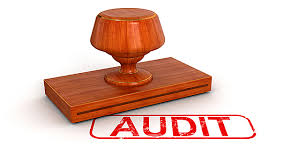
A fact finding event is used to gather all applicable information. Auditors should make an effort not to form an opinion or make evaluative comments during this phase.
A Team Approach – If a safety audit team is used, make assignments to each person that defines their area of inspection. Ensure they have the proper program background information and documents.
Safety Audit Areas – most audits can be broken down into these areas:
Employee knowledge – OSHA standards require “effective training” – an effective program ensures that employees have the knowledge required to operate in a safe manner on a daily basis. The level of knowledge required depends on the specific activities in which the employee is involved and their specific duties and responsibilities. Generally, managers and supervisors should have a higher level of knowledge than general employees. This includes practical knowledge of program administration, management and training. They should be able to discuss all elements of each program that affects their assigned employees. Many programs divide employees into these two groups- authorized employees and affected employees. Authorized employees must have a high level of working knowledge involving hazard identification and hazard control procedures. Determining employee level of knowledge can be achieved though written quizzes, formal interviews or informal questions in the workplace.
Written Program Review – during the safety audit, a comprehensive review of the written program should be conducted. This review should compare the company program to requirements for hazard identification and control, required employee training and record keeping against the local, state and federal requirements. Additionally, if applicable, the company insurance carrier should be asked to conduct an independent written program review. Program Administration – This part of the safety audit review checks the implementation and management of specific program requirements. This section asks these and other similar questions:
- Is there an effective and on-going employee training program?
- Are specific duties and responsibilities assigned?
- Are sufficient assets provided?
- Is there an effective and on-going employee training program?
Record & Document Review – Missing or incomplete documents or records is a good indication that a program that is not working as designed. Records are the company’s only means of proving that specific regulatory requirements have been met. Record review also includes a look at the results, recommendations and corrective actions from the last program audit.
Equipment and Material – This area of an safety audit inspects the material condition and applicability of the equipment for hazard control in a specific program. Examples of audit questions for this area are:
- Is the equipment in a safe condition?
- Is there adequate equipment to conduct tasks safely?
- Is personal protective equipment used and stored properly?
- Is equipment, such as exit lights, emergency lights, fire extinguishers, material storage and handling equipment designed and staged to control hazards effectively?
Review of Findings of the safety audit:
After all documents, written programs, procedures, work practices and equipment have been inspected, gather your team and material together to formulate a concise report that details all areas of the program. Remember to focus on the four basic questions mentioned earlier. Each program requirement should be addressed with deficiencies noted. Include comments of a positive nature for each element that is being effectively managed.
Recommendations from the safety audit: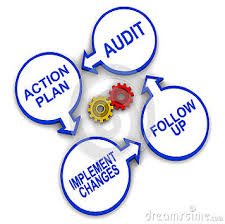
Develop recommended actions for each deficient condition of the program. Careful forethought should be applied to ensure that this is not a process that simply makes more rules,additional record keeping requirement or makes production tasks more difficult. Examine the manner and means in which the current deficient elements are managed to determine if there is a simpler procedure that can be employed.
Corrective Actions from the safety audit:
Development of corrective action should involve the managers and supervisor who will be required to execute the corrections. Set priorities based on level of hazard. All corrective actions should be assigned a completion and review date. Records of completed corrective actions should be reviewed through the normal management chain and then be filed for use during the next audit.
Publish the Safety Audit results:
It is essential to let all supervisors and manager know the basic findings and recommendations. Don’t forget to acknowledge those departments, managers and supervisors who are properly executing their responsibilities. After a few audits, everyone will want to show up on the plus side of the results, making the safety mangers job much easier.
What are the outcomes of a Safety Audit:
- Discovering gaps in safety and accountability within the case processing systems under review, i.e., answering the “Audit question.”
- Specific recommendations for system change that enable community partners to close the discovered gaps.
- New expertise in a process that can be used for ongoing community planning, evaluation, and problem-solving.
- New ways of community partners to work together.
Safety Audit Team:
Safety audits should be carried out at general management level and at each plant or site. The audit team members should be carefully selected for their knowledge and experience in the field of audit, from general management, plant management, and other safety specialists.
For example, at plant level, the team should consist of, as a minimum: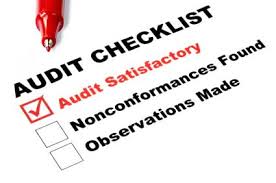
• Site Plant Manager
• Site Plant Foreman
• Safety Specialist.
As safety audits are carried out at a number of levels in a factory, e.g. small department, followed by operating and then general management level, it is essential that a team member at the lowest level is also incorporated in the next level team, and so on,so as to ensure a common approach, improved ease of reporting and communication.
When safety audits are carried out at a Main Branch satellite works, it is recommended that one of the Safety Audit Team who conducted the audit at the satellite works, participate in the Main Branch Team.
The indications given for frequency, duration, team composition and areas of activity may be adjusted according to plant size.
Safety Audit Report:
Local management must be involved in the review of the findings of the audit team before the audit
team leaves site.
Following the audits, a report should be issued containing the following:
- A description of all findings relative to items needing a proposal for remedial action.
- A description of any defects detected on equipment and initial proposals for remedial actions.
- The names and job titles of those people who are responsible for initiating remedial actions.
- The need for any revision of operating instructions or company standards.
- Agreed target dates for completion (which realistically allow sufficient time for thorough technical.
- assessment and consequent changes, if necessary).
Copies of the audit report shall be given to the local plant manager and to the company management, who will take decisions and supervise follow-up actions agreed by the safety audit team.
Monitoring and Follow-up:
Monitoring of approved safety audit conclusions and recommendations is an important activity to ensure improvement of the safety level of a plant or company.
It is the responsibility of the Plant Manager to see that audit conclusions and recommendations are implemented by the agreed target dates.
Appendix A: Proposed Characteristics of Safety Audits, Safety Inspections and Safety Walks
Third Party Audits (external auditing):
The organizations management or the regulator may decide to have an external agency carry out an independent safety audit. “External audits of the SMS may be conducted by relevant authorities responsible for acceptance of the service provider’s SMS. Additionally, audits may be conducted by industry associations or other third parties selected by the service provider. These external audits enhance the internal audit system as well as provide independent oversight.”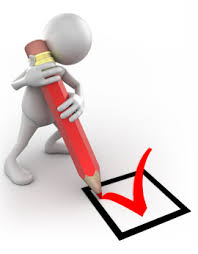
An organization which possesses the necessary expertise and technical experience to verify on behalf of a State authority the compliance of an air navigation service provider with the applicable regulatory requirements is called a qualified entity.
Internal Safety Audits (self auditing):
Internal safety audits and safety surveys should be used to assess the level of compliance with the applicable regulatory framework and the organizational SMS processes and procedures, to verify the effectiveness of such processes and procedures and to identify corrective measures if needed. Planning of the audits should take into account the safety significance of the processes to be audited and the results of previous audits. An annual audit program should include:
- Definition of the audits, in terms of criteria, scope, frequency, and methods;
- Description of the processes used to select the auditors;
- The requirement that individuals shall not audit their own work;
- Documented procedures for assignment of responsibilities, planning and conduct of audits, reporting results and maintaining records;
- Audits of contractors and vendors.
Click the below link to download the audit forms

